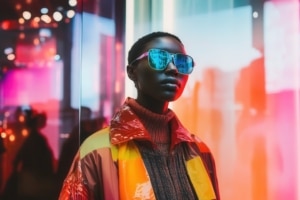Because Generation Z is redefining the codes of luxury and could account for nearly 30% of the sector’s purchases by 2030, we are keen to offer our customers a range of insights. This expert viewpoint, shared by Éric Briones in his book La Génération Z & Le Luxe (Dunod), perfectly complements our own analyses.
Beyond the major typologies already explored, what new sub-cultures or micro-tribes do you observe within Generation Z that could redefine the codes of luxury? How can brands anticipate and integrate these influences to stay relevant?
There are three typologies that particularly inspired me from the outset of the conception of this book, and which were identified by our Generation Z student contributors directly in the field, particularly in China, but not exclusively.
- The Wise Men of Perceived Value
These consumers embody extreme rationality in their decisions to purchase luxury goods. They evaluate price according to four dimensions: Product, Experience, Commitments and Personalization. This pragmatic approach is not only unique to this tribe, but reflects a value widely shared by the majority of Zs, embodied by this mathematical law for them: Perceived Value is always higher than price… otherwise it’s censorship!
- The Dupes Addicts
They’ve built their influence on the search for and use of “Dupes”. While copying has always existed, Generation Z has turned wearing Dupes into an act of pride, a form of personal enjoyment and a challenge to big capitalism. For them, the Dupe is as much a symbol of thrift as an act of rebellion.
- The Z Archivists
These enthusiasts are distinguished by their erudition in fashion. They celebrate a glorious past, venerate craftsmanship and turn clothing into a contemporary work of art. Their quest for meaning and heritage guides their choices.
Faced with these three trends, luxury brands must respond strategically and avoid “burying their heads in the sand”.
For the Sages de la Valeur Perçue, it is crucial not to succumb to a policy of price cutting, which would be suicidal for the image of luxury. The answer lies in product innovation: creating “access-products”, condensing the best of home quality, at a price that is competitive but not devaluing.
For the Z Archivists, Vuitton seems to be the house most in tune with this trend. The ambitious reboot of the iconic Murakami collaboration and the Pharrell Williams “show and exhibition” on January 21 illustrate a desire for dialogue between past and present.
As for Dupes Addicts, too many brands continue to ignore this phenomenon. The response must be systemic, going beyond legal action alone. It begins right in the stores, with salespeople trained to enrich their sales pitch with a “sustainability” component. This angle, often neglected, can counter the attraction of Dupes by highlighting the environmental impact of these practices. It’s a long-term battle and a central theme that we’ll be pursuing on the Journal du Luxe in 2025.
Generation Z, born with digital technology, nevertheless aspires to immersive, authentic experiences. How are current and emerging forms of digital redefining the luxury experience for this generation, and what are the opportunities for brands?
We’re dealing with the first truly Gen AI generation. I see this first-hand with my students: their use of generative artificial intelligence reaches 100% by Master’s level, and 80% by the end of their A-levels. This is not a paradoxical generation, and the notion of paradox itself proves useless in an operational approach to our customers.
It’s a generation of trompe-l’œil: its technological philosophy is in line with this logic. They demand universal egalitarianism, yet expect to be treated like VIPs. To meet this demand for extreme personalization and treat each of the 300 million luxury customers as a VIP, the industry has no choice but to excel in the experiential use of artificial intelligence.
Houses that adopt an anti-IA stance are either demagogic or totally out of touch with their customers’ expectations. The virtues of the current luxury crisis are that we are finally moving away from a “brand-centric” vision towards a “customer-centric” pragmatism, which is bringing about a real revolution in the leadership of the houses.
And since GenZ is often described as favoring experiences over material possession, how do you explain their simultaneous infatuation with tangible luxury products? What does this duality reflect vs. other luxury clienteles?
It reminds me of a parody of Jérôme Commandeur’s “film jeune bobo parisien” for Son monde magique on Canal+, which ended with the line: “Choisir, c’est un peu mourir.” As I see it, Generation Z, with its extreme demands on brands, wants nothing more than the best of both worlds: physical and experiential. This demand, let’s be clear, is contagious and is already influencing other generations.
When we observe their fascination for the archival dimension I mentioned, or their adoration for the paper editions of luxury brands, which have become the new cult objects on their coffee tables, we understand that the fantasies of “total dematerialization” through Web3 have largely been buried by the Zs.
And what about the choice of that One Million cover?
Funny, I hadn’t seen it from that angle, I’m too L’Oréalian, LOL. This cover, which works so well with Generation Z and in bookshops (look, a zogma) proposed by my publishing house. It embodies this generation’s almost instinctive desire for luxury, their inordinate passion for brand codes and, above all… for money!
Finally, I find her full of joy, zest for life and optimism, just like our friend Stéphane Truchi, to whom the book is dedicated.



